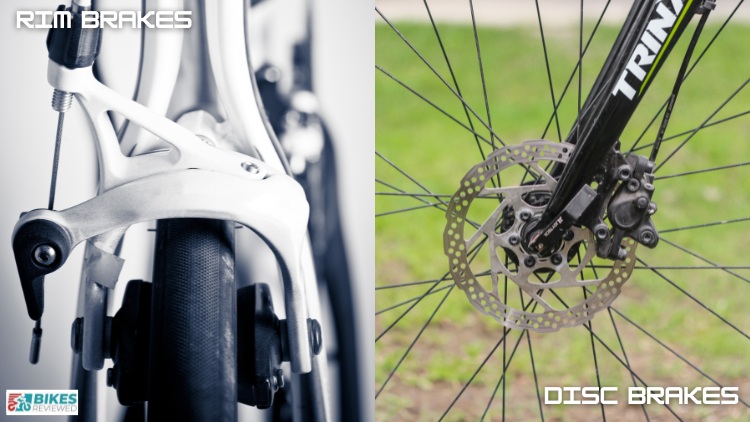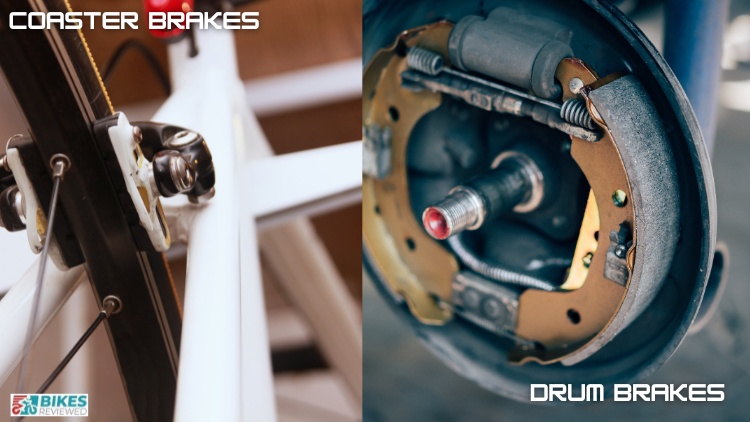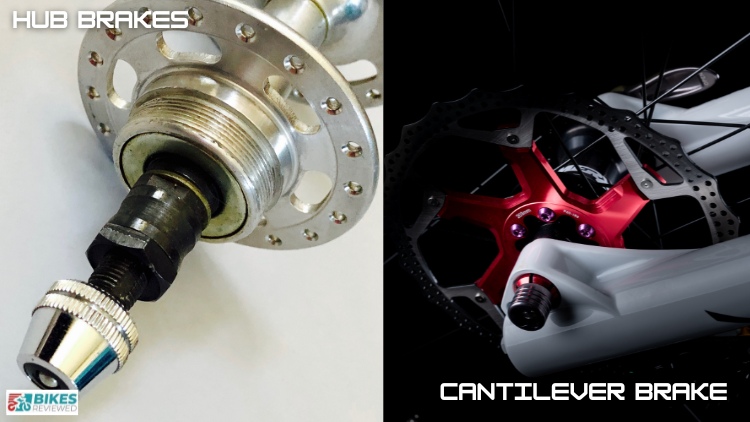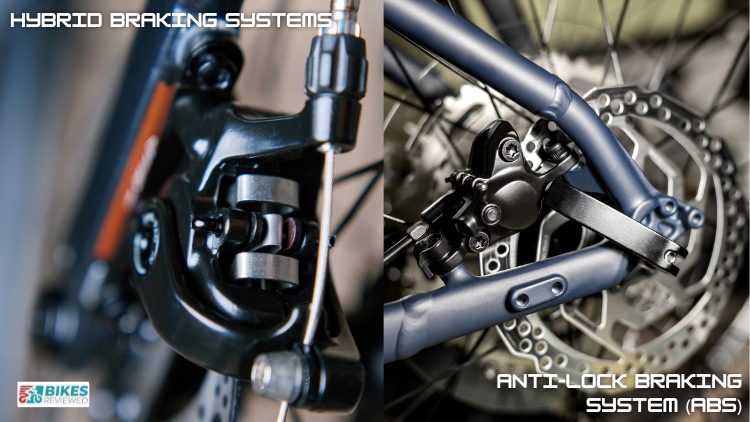Bike brakes are a crucial component of any bicycle, ensuring the rider's safety by allowing them to slow down or come to a complete stop. There are several types of bike brakes, each with its own set of characteristics and advantages. In simple words, let's explore the various types of bike brakes commonly used today.
Types Of Bike Brakes
From traditional rim brakes with caliper and V-brake subtypes, to high-performance disc brakes, coaster brakes for simplicity, durable drum brakes, and enclosed hub brakes.
The versatility of cantilever and linear-pull brakes, advanced electromagnetic brakes in e-bikes, and innovative hybrid braking systems. Learn about safety features like Anti-Lock Braking System (ABS) and unique setups like internal gear hubs with coaster brakes, offering a clean and low-maintenance solution for bikes.
Rim Brakes
Rim brakes are one of the most traditional and widely used types. They operate by squeezing brake pads against the wheel's rims to create friction and slow down the bike. There are two main subtypes:
- Caliper Brakes: These are attached to the frame and fork and operate by closing in on the wheel rims from both sides.
- V-Brakes (Linear Pull Brakes): Similar to caliper brakes, but with longer arms, providing better leverage and improved braking performance.
Rim brakes are affordable, lightweight, and easy to maintain. However, they may be less effective in wet conditions, and prolonged use can wear down the wheel rims.

Disc Brakes
Disc brakes have gained popularity for their superior stopping power and performance, especially in adverse weather conditions. They consist of a rotor attached to the wheel hub and a caliper, which houses brake pads. There are two main types of disc brakes:
- Mechanical Disc Brakes: Operated by a cable, similar to rim brakes but with the braking action taking place at the disc.
- Hydraulic Disc Brakes: Use hydraulic fluid to transfer force from the brake lever to the caliper, providing more precise control and stronger braking.
Disc brakes offer consistent performance in various conditions, require less maintenance, and are less affected by wet weather. However, they are usually heavier and more expensive than rim brakes.
Also Read - Latest Brakes and Rotors
Coaster Brakes
Coaster brakes, also known as backpedal brakes, are commonly found on single-speed and some cruiser bikes. These brakes are internal to the rear hub and engage when the rider pedals backward. Coaster brakes are simple and reliable but may lack the precision and modulation of other brake types.

Drum Brakes
Drum brakes are enclosed within the wheel hub and operate by pressing brake shoes against the interior surface of the drum. While not as common on modern bicycles, drum brakes are known for their durability and low maintenance. They are often found on utility and city bikes.
Hub Brakes
Hub brakes, like roller brakes and disc brakes, are located within the wheel hub. They offer good all-weather performance and are enclosed, reducing exposure to dirt and water. However, hub brakes can be heavier and more challenging to service compared to other types.

Cantilever Brakes
Cantilever brakes were popular on older mountain bikes and cyclocross bikes. They have two brake arms that attach to separate brake bosses on the frame or fork. Cantilever brakes provide decent stopping power and mud clearance, making them suitable for off-road conditions.
Hybrid Braking Systems
Some bikes employ a combination of different brake types, creating hybrid braking systems. For example, a bike may have disc brakes in the front for powerful stopping and rim brakes in the rear for simplicity and cost-effectiveness. These hybrid systems aim to capitalize on the strengths of each brake type while mitigating their respective weaknesses.

Anti-Lock Braking System (ABS) for Bikes
Inspired by automotive technology, ABS for bikes is a safety feature that prevents wheel lock-up during hard braking, especially in slippery conditions. ABS modulates brake pressure to maintain traction and control, reducing the risk of skidding. While not yet standard on all bicycles, ABS technology is becoming more prevalent, particularly on high-end and electric bikes.
Internal Gear Hub with Coaster Brake
Some bikes come equipped with an internal gear hub that incorporates a coaster brake. This combination simplifies the bike's appearance by eliminating external gears and offers the convenience of a backpedal coaster brake. These systems are popular on commuter and city bikes, providing a clean and low-maintenance setup.
Choosing The Best Bike Braking system
Choosing the right brake system involves considering factors such as the type of riding, terrain, weather conditions, and personal preferences. Whether you opt for the simplicity of rim brakes, the high-performance capabilities of disc brakes, or the classic feel of coaster brakes, each type has its own advantages.
Advances in technology continue to bring innovations, making biking safer and more enjoyable for riders of all levels. Ultimately, understanding the characteristics of different brake types empowers cyclists to make informed decisions based on their individual riding requirements.
